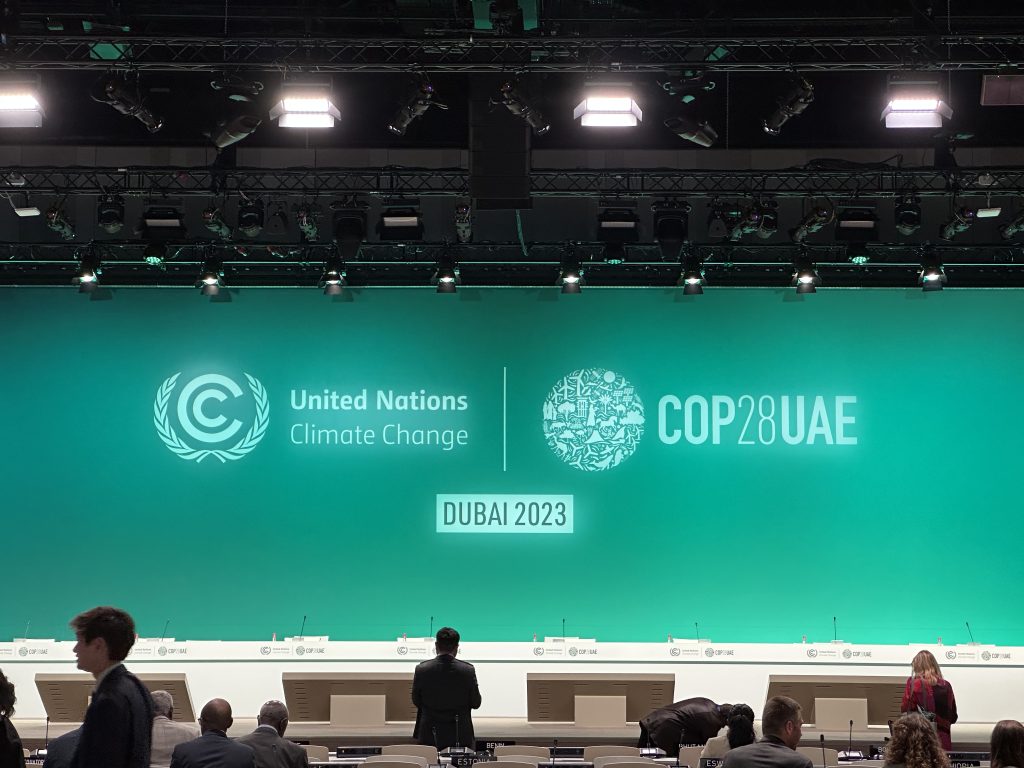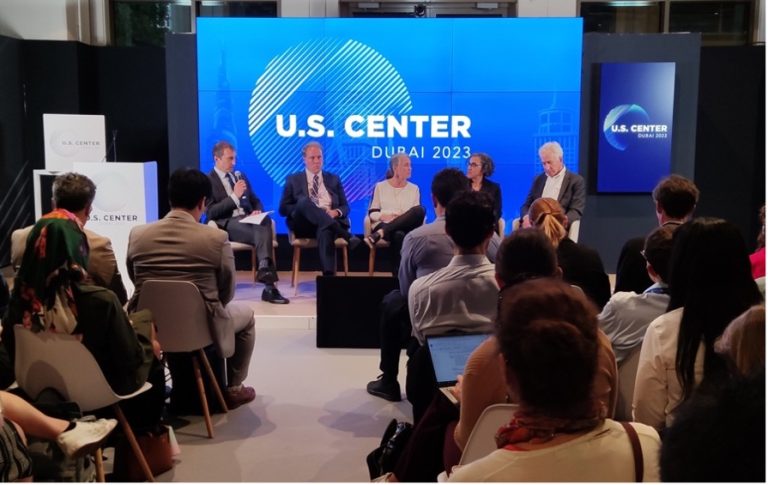Moving on Methane – More than Hot Air
2023年12月05日
绿色创新发展研究院iGDP
In the days following the China, US, and UAE Summit at COP28 on accelerating efforts to minimize methane and other non-CO2 greenhouse gases, China and the US have provided more detail on their respective visions for methane reduction.
Curbing methane emissions is widely seen as some of the most appetizing low-hanging fruit to reduce short-term warming and cap global average temperature increase at 1.5 degrees Celsius.

图源:袁雅婷
Beijing unveiled its strategy towards the conclusion of its four-day November climate conference with the United States in Sunnylands, California. The plan commits to “effectively enhance” its monitoring and supervision systems for methane during its five-year plan through 2025, and to “substantially enhance” these systems from 2026 to 2030. The nation aims to reduce “flaring,” the burning off of emissions at oil and gas wells, and to address methane leaks at coal mines. The plan released by China’s Ministry of Ecology and Environment also pledged to enhance methane management in agriculture and bolster controls for methane emissions from waste.
The US, meanwhile, announced stringent new standards aimed at significantly decreasing methane emissions from its oil and gas industry at the Summit. These standards are projected to result in an approximately 80% reduction in methane emissions compared to expected future level in business-as-usual scenario, potentially preventing the release of 1.5 gigatons of CO2 emissions over the next 15 years. Additionally, the United States intends to reassess and, if necessary, amend its Clean Air Act emission standards for both new and existing municipal solid waste landfills. Furthermore, it intends to update emissions estimates for municipal solid waste landfills in 2024.
At a COP28 US Pavilion panel discussion entitled “How the United States Delivers on Ambitious Methane Mitigation at Home and Abroad,” key figures in America’s methane mitigation movement gave their insights on the newly announced actions.

Rick Duke, U.S. Deputy Special Envoy for Climate; Brad Crabtree, Assistant Secretary for Fossil Energy and Carbon Management, Department of Energy; Gillian Caldwell, Chief Climate Officer, USAID; Liane Randolph – Chair, California Air Resources Board; Fred Krupp – President of the Environmental Defense Fund. ©️ Diego Montero
Panelists agreed America’s new methane rules were a significant leap forward.
Brad Crabtree, Assistant Secretary for Fossil Energy and Carbon Management, Department of Energy, said America’s 2021 Methane Emissions Reduction Plan was driving improvements in methane MRV, emphasizing the importance of third party involvement to prevent underreporting.
Gillian Caldwell, Chief Climate Officer, USAID, pointed out that methane actions would reduce ground level ozone, a major co-benefit for public health and crop yields.
Liane Randolph, Chair of the California Air Resources Board, brought attention to the launch at COP28 of a new initiative to cut methane from the waste sector at subnational level under the Subnational Climate Action Leaders’ Exchange.
Fred Krupp, President of the Environmental Defense Fund, said the US will now have some of the strongest rules on methane, and that the new international actions, if properly implemented, could be expected to quickly reduce extreme weather events, given methane’s high global warming potential.
At the Summit, governments, philanthropic organizations, and the private sector also announced an unprecedented increase of over $1 billion in new grant funding for methane reduction initiatives mobilized since COP27. This amount surpasses the current annual grant funding by more than threefold and is expected to unlock billions in project investment. Additionally, governments reaffirmed their commitment to the largest-ever replenishment of the Montreal Multilateral Fund with $965 million in funding to bolster the implementation of the Kigali Amendment and enhance energy efficiency.
Despite being accountable for over half of the current global warming, emissions of methane and other non-CO2 greenhouse gases, along with their precursors, attract relatively little attention in the global climate discussion.
There is a growing call for all countries to submit 2035 NDCs that include all GHGs, not just CO2. Non-CO2 GHGs did not appear in China’s 2020 NDC, but they will now be addressed in its next NDC. With only half of all countries including all GHGs in their NDCs, this is major progress. It is also a firm new foothold on the upward climb toward restoration of China-US collaborative climate leadership.
Diego Montero,iGDP 战略总监。负责机构研究、传播和战略规划。
